Replacing the factory insoles with something new is a trick many experienced backpackers know about. But not everyone does. And here are my reasons I think most people will benefit from new inserts.
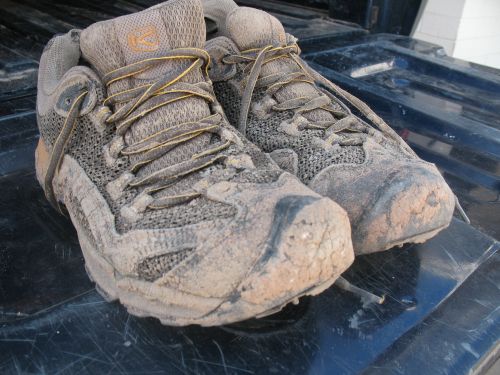
As much as I love spending all my free time outside, even I have to pay the bills. I’m in transition, but currently, I am working at the occupation I have worked on and off for about 15 years: Corporate IT Monkey.

Only a little more body hair than me.
I’m the guy who fixes your wireless issues, sets up the e-mail accounts on the back end, and delivers new equipment. I may also politely ask why you are storing Elton John’s Greatest Hits on our server, smiles, and nods when you spill wine all over a $1500 computer and pretends that the mysterious pop-up ads you are getting on your computer has nothing to do with going to, ah, suspect sites on the company issued laptop.
Not the most exciting job, but it has funded all the miles I’ve been able to walk. 🙂
As part of my career, I’ve been able to get to know people and what they like to do in real life. Fun activities when they are not reminding people to fill out their healthcare paperwork the correct way (guilty as charged!), attending PowerPoint presentations they have absolutely no interest in, and trying to pretend to all excited about third-quarter sales projections. A reason why it is called WORK and not FUN. 😉
In any case, some of these people have an interest in the outdoors. It is Colorado after all…
One day, I am talking to a person I am friendly with at work. She mentioned how she had been training for a marathon and even after replacing her shoes, her feet and knees are still hurting. I asked if she had replaced the factory insoles? She said she hadn’t. Never occurred to her but she will give it a try.
A week later, I get a very nice e-mail thanking me for the suggestion. The knees no longer hurt and my colleague can’t believe the difference it made.
A light bulb went off. How many other people don’t know to replace the factory insoles? Something simple I learned many years ago but is not apparent to everyone.
The insoles that come with boots and shoes, to use a technical term, are crap.
Thin, no support and does not cushion a person from the impact of hiking, running or other outdoor activities
Though road running is more impact on the knees in general, snowshoers, backpackers, climbers, and Nordic backcountry skiers can all benefit from getting rid of these glorified cardboard inserts.

Hauling a heavy climbing pack up and down Grand Teton with paper thin inserts in your approach shoes will not be fun. What was supposed to be a relaxing weekend of 20 miles total to a favorite alpine lake may make you wonder why you ever backpack in the first place when you finally arrive at the car. And so on.
All because of a simple and inexpensive change that can make a big difference.
.So, which ones to buy? I’ve used everything from Dr. Scholl’s brand to the more expensive ones found at REI. Every foot is different, and one brand and type may work better for you than another.
Having said that, there are some basic types. Depending on your foot type, shoe, and activity one type or brand may be better than another.
I have not found any ‘official’ classification, but here’s what I’ve come up with based on my own experience:
- Gel Insoles – Seems to provide the most cushioning, very flexible. Some people love them; I do not like them as much because I have trouble fitting them in my shoes and feel they provide less support I also find these fall apart if exposed to a lot of moisture (snow, rain). If you want the most cushioning, and do a more casual pace, these seem to work well, however. Tend to be the least expensive.
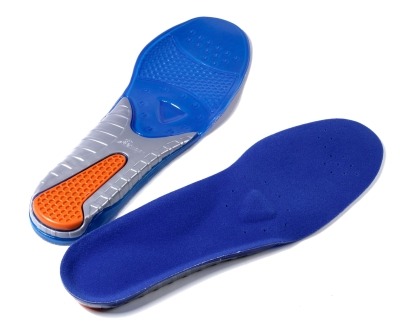
- Semi-rigid – A nice compromise between cushioning and support. The original replacement insole type. These insoles are my favorite type and ones I have in all my shoes. For the average person who is not doing a very high impact pace and has relatively ‘normal’ (a very subjective term) feet, this type is generally an excellent way to go. About mid-range in price, too.
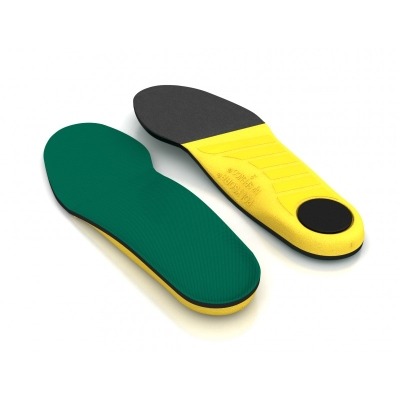
- Rigid – Though cushioned, more about the support. Holds the feet in place for more ergonomic benefits to not only the feet but the knees as well. Superfeet is the most well-known brand. Many experienced runners and backpackers swear by them. I’ve never used them personally, but people who have used custom orthotics love them as a less expensive alternative. They are the most costly. They do come with a user manual, too. 🙂 If you need the absolute support and thinking about needing custom orthotics, Superfeet could be a very good alternative.
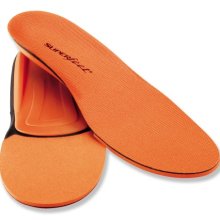
- Moldable Inserts – Something reasonably new; about the same price as Superfeet. Place these inserts in a toaster oven or oven on low, heat up and then place your foot in them. Voila! Custom orthotics on a budget price. Cushioning and support. Not sure of the longevity or how effective they may be for active outdoor pursuits, but it is an option that may work for some people. At least one backpacking oriented review gave them high praise.
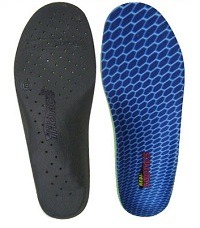
- Custom Orthotics – If nothing works for you, considering seeing a health care professional who can prescribe custom orthotics. The most expensive option but may be worth if you can hike, backpack or run pain-free!

Which brand to get?
I’ve had good luck with the Spenco Polysorb inserts personally, but it depends on what works for you.
The more generic brands sold in drug stores have worked well for me too when I’ve had to resupply in smaller towns. They are less expensive but tend to be a little less well fitted for the shoe. The Spenco brand, for example, is sized for different shoes. The ones found in a drug store are sized for different shoe sizes and must be trimmed down to fit a shoe better.
Not a deal breaker, but something to keep in mind.
Other resources?
Fixyourfeet.com is THE resource for fitting shoes, inserts and maintaining your feet for post-activity injuries (e.g., blisters) for preventive maintenance, so you do not have injuries, to begin with. John Vonhof is well known in both thru-hiking and ultra running circles.
Great..now what do I do with those old inserts?
Why make camp shoes out of them! 🙂

Folks need to consider issues such as how high their arches are, and how much their feet pronate when considering inserts. I under-pronate and have relatively low arches. A cushioned footbed that allows the foot to move naturally might be better for me than one that offers more support. As for SuperFeet, be sure to read their web site, ’cause their displays and boxes won’t tell you that some are better for those of us with low arches, and others are better for those of you with high ones.
Thanks for the input. Some valid points. Think my sentence of “Every foot is different and one brand or type make work better for your needs” covers that as well.
Happy Trails!